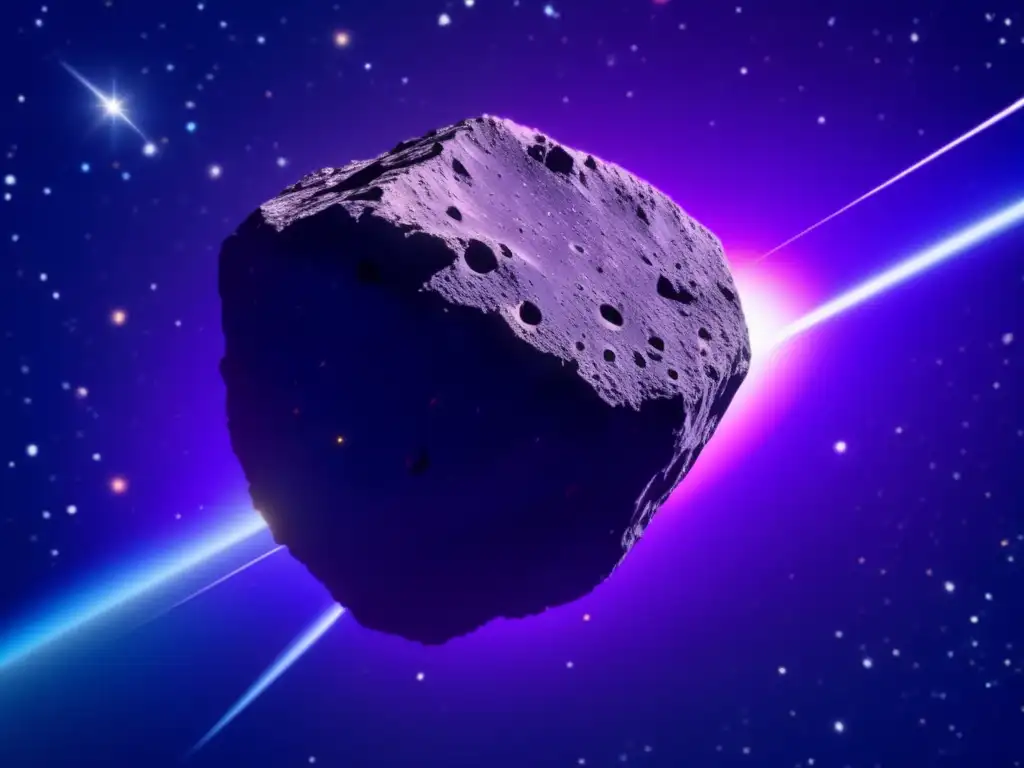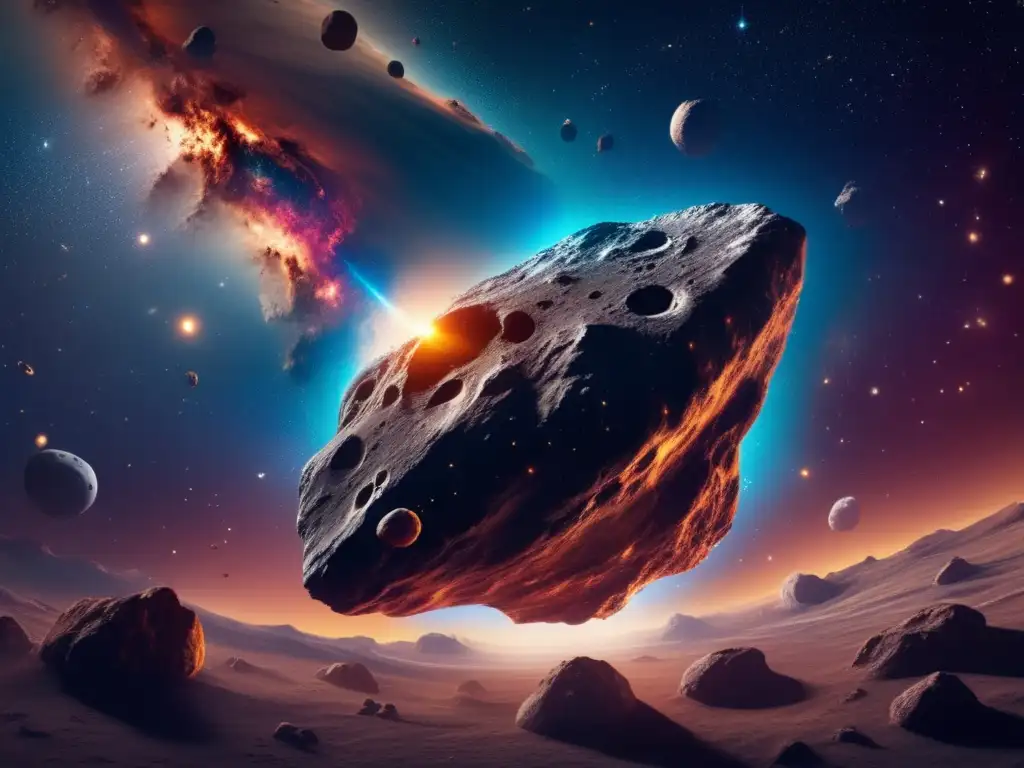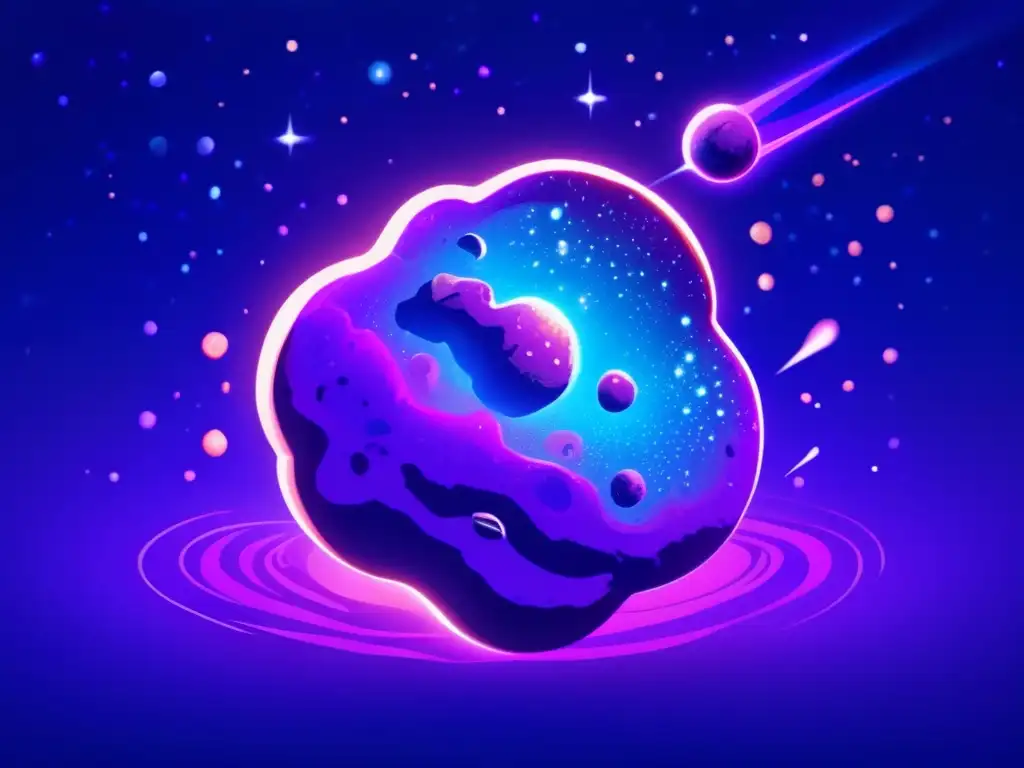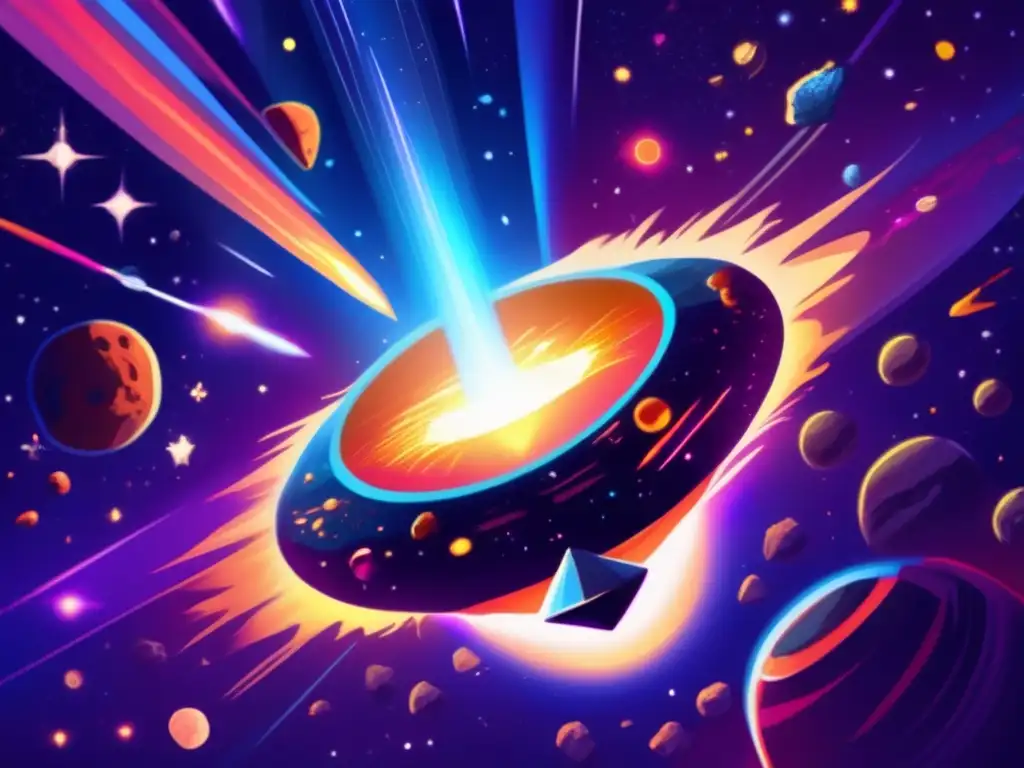Life's Galactic Journey: Asteroids As Vessels For Life

Introduction
The search for extraterrestrial life is one of the biggest mysteries that humans have been trying to unravel for decades. Scientists believe that if life exists beyond Earth, it is most likely microbial or primitive, and may exist in some of the unlikeliest places like asteroids. Asteroids are the rocky bodies that orbit around the Sun, primarily in the asteroid belt between Mars and Jupiter. They are known for causing mass extinction events on Earth. However, there is evidence suggesting that asteroids may have also played a role in delivering water and organic molecules that helped jumpstart life on our planet. This article explores the possibility of asteroids as potential vessels for life.
The Possibility of Life on Asteroids

The Role of Asteroids in Panspermia
Panspermia is the theory that suggests life may exist throughout the Universe and is distributed by comets, meteoroids, and asteroids. It proposes that the building blocks of life such as amino acids, nucleotides, and other organic molecules could have hitchhiked on these celestial bodies and started life on a new planet. There is evidence to support this hypothesis. In 2019, researchers confirmed that two meteorites contained complex organic compounds such as amino acids, urea, and even nucleobases that are key building blocks for DNA and RNA- the genetic material for life on Earth. Thus, asteroids could be carriers of life, and they could have played a vital role in spreading life throughout the Universe.
Liquid Water and Organic Molecules on Asteroids
In 2018, scientists from the Japanese space agency JAXA, successfully landed a spacecraft, Hayabusa-2, on an asteroid named Ryugu. The spacecraft collected samples of the asteroid's surface material and returned to Earth in 2020. Analysis of these samples showed that asteroid Ryugu contains water and organic molecules such as amino acids, nucleotides, hydrocarbons, and others. These findings suggest that asteroids might have the necessary ingredients for life, including liquid water and organic molecules, both of which are essential for life as we know it.
Survival of Life on Asteroids
Asteroids are known for their harsh environments, with temperatures ranging from extremely cold to scorching hot and a lack of atmosphere and protection from cosmic radiation. However, there is evidence that suggests life could survive on asteroids. In 2019, an international team of scientists discovered 15,000-year-old microorganisms trapped inside giant crystals in a Mexican mine. These organisms were able to survive by feeding on minerals like iron and sulphur, and they were able to withstand the extreme conditions inside the crystals, including high temperatures and low oxygen levels. Thus, life has shown itself to be incredibly versatile and adaptable, and it could have the potential to survive on asteroids if it were transported there.
Asteroids as Potential Homes for Extraterrestrial Life

Trojan Asteroids
Trojan asteroids are a type of asteroid that shares the orbit of a planet, either preceding or following it. There are Trojan asteroids in the orbit of Jupiter, Neptune, and Mars. Some astrobiologists believe that Trojan asteroids may have the potential to harbor extraterrestrial life. Trojan asteroids follow stable orbits and move in clusters, which means that they would provide a stable environment for life to evolve. Additionally, liquid water could exist on these asteroids, since some of them have been found to have ice on their surfaces, which could support microbial life.
Mini-Moons
Mini moons are small, temporarily captured asteroids that orbit a planet for a limited amount of time before being ejected back into space. Scientists believe that mini-moons could have the potential to support life because the orbital configuration would provide a stable environment with a supply of resources. For instance, if an asteroid were captured as a mini-moon by Earth, it would be shielded from the Sun's radiation and have access to water and other resources that could support microbial life.
Near-Earth Asteroids
Near-Earth asteroids have orbits that come close to, or cross, Earth's orbit. Some of these asteroids are known to contain volatile elements like water and organic molecules, and they are believed to be the remnants of comets. It is possible that life could exist on these asteroids and be transported to Earth via impacts. Additionally, near-Earth asteroids could provide a stepping stone for human exploration and colonization of space.
Frequently Asked Questions

-
Could asteroids be carriers of life?
Yes. Asteroids could have played a vital role in spreading life throughout the Universe by carrying the necessary building blocks of life such as amino acids, nucleotides, and other organic molecules.
-
Do asteroids contain liquid water and organic molecules?
Yes. Analysis of samples from asteroid Ryugu showed that it contains water and organic molecules such as amino acids, nucleotides, hydrocarbons, and others that are essential for life as we know it.
-
Is it possible for life to survive on asteroids?
Yes. Microorganisms were found to have survived for 15,000 years inside giant crystals in a Mexican mine, indicating that life can be incredibly versatile and adaptable, and it could potentially survive on asteroids.
-
Could Trojan asteroids and mini-moons harbor extraterrestrial life?
Yes. Some scientists believe that Trojan asteroids and mini-moons could provide a stable environment for life to evolve and have access to resources such as water that could support microbial life.
-
What is the significance of near-Earth asteroids?
Near-Earth asteroids could provide a stepping stone for human exploration and colonization of space, and they are also believed to have played a role in delivering water and organic molecules that helped jumpstart life on Earth.
Conclusion
Asteroids are more than just rocky bodies orbiting around the Sun. They could be potential vessels for life, carrying the necessary building blocks of life and providing a stable environment for life to evolve. The search for extraterrestrial life continues, and as we explore asteroids, we may find answers to one of the greatest mysteries that humans have been trying to unravel for decades.
Thank you for reading this article on Asteroid Realm. We encourage you to share your thoughts in the comments section and to positively interact with our website. If you found this article interesting, please consider subscribing and sharing it with your friends on social networks.
Additional Resources

 Space Rocks With A Spark Of Life: Asteroids And Microorganisms
Space Rocks With A Spark Of Life: Asteroids And Microorganisms Asteroids: The Unsuspected Life-Bearers Of The Universe
Asteroids: The Unsuspected Life-Bearers Of The Universe Cosmic Connections: Asteroids And The Origins Of Life
Cosmic Connections: Asteroids And The Origins Of LifeIf you want to discover more articles similar to Life's Galactic Journey: Asteroids As Vessels For Life, you can visit the Asteroids and Extraterrestrial Life category.
Leave a Reply

Articulos relacionados: